Autopsy of an Electric Toothbrush
The battery of my four-and-a-half years old electric toothbrush had been near its end for months. Recently it was becoming very annoying: you couldn't use it for more than four minutes in a row (i.e., the time for two brushing sessions) before recharging it.
I therefore decided to change the battery, as I did for my electric shaver years ago. You are not supposed to be able to change the battery, but it is possible to open the body and take the battery out of it for recycling. It should therefore be possible to access it and work on it.
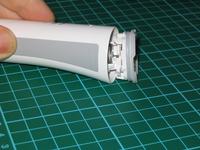
At the back of the stand there is a thingy that you can use to unscrew the bottom of the body of the toothbrush.
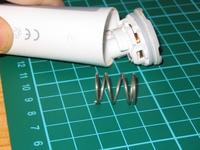
It opens with a spring and four very thin copper wires remain attached to the cap.
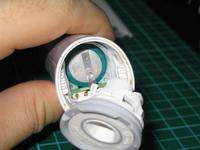
The battery is showing through the opening.
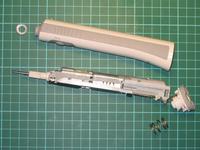
You take the core by pressing the tip of the body (where you normally put the toothbrush) against a solid surface (floor or wall). The core then slides out thrgouh the back.
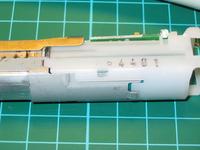
The battery is encased in the plastic mount at the end of the core. It is clipped in, but you can take it apart quite easily.
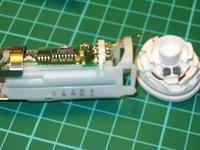
After that, it becomes harder: the battery case is topped with a small PCB on which the battery is soldered from the bottom. Moreover, the PCB is attached to the motor by two metallic fins.
With Niko's help, we tried to unsolder the battery from the PCB, removing the excess tin with a soldering pump. It still wasn't possible to take it apart. We then resorted to cutting the battery's legs. It then slid out quite easily. But after that, the toothbrush would not start anymore. We then tried to apply the battery's voltage straight to the motor (first cutting the motor off from the PCB board), without success. We then applied 3.3V to the motor, which spun a bit before stopping for good.
I don't know what we did wrong when unsoldering the battery (heating a nearby diode too much? What else could have happened?), but there was no point changing the battery if the motor is broken. I then resorted to buying a new device.
[ Posted on September 26th, 2006 at 19:51 | 2 comments | permanent link ]








Found your blog while looking for help with my toothbrush... which following the story I had the same problem. I found that you have to jump start the toothbrush before reassembling it.... put a jumper on the neg terminal of the battery turn on the toothbrush and then touch it to the other terminal of the motor for a moment to jolt it into operation. It then runs fine. It must reset some timer or something.
YAY saved my toothbrush! I was just about to cut out the PCB and replace it with a switch and solar panel. I should have better things to do with my time.